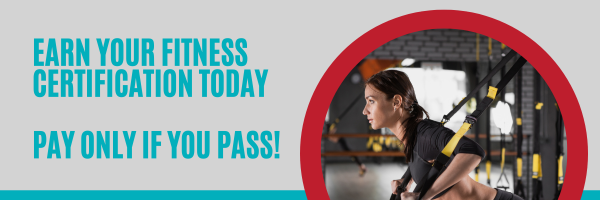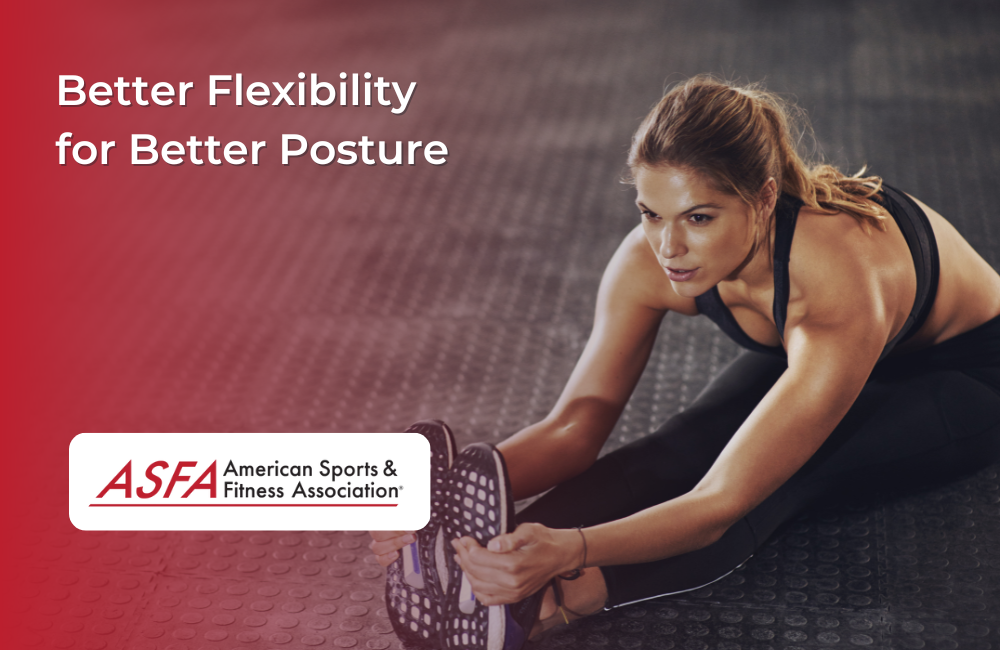The Crucial Role of Flexibility in Achieving and Maintaining Good Posture: A Detailed Guide
Good posture is more than just a matter of looking poised and confident—it is essential for overall health and functionality. Bad posture can lead to long-term effects on health, including potential pain and discomfort, such as back pain and headaches. Proper posture can enhance your appearance, alleviate pain and discomfort, and even improve respiratory function. However, maintaining good posture involves more than simply sitting or standing up straight; it requires a high degree of flexibility, particularly in the muscles surrounding and supporting your spine.
In this comprehensive guide, we’ll explore the benefits of flexibility for posture in greater depth and provide detailed exercises and techniques to help you enhance your flexibility, ultimately leading to better posture and overall well-being.
The Benefits of Flexibility for Posture
1. Enhanced Range of Motion
Detailed Explanation: Flexibility exercises are designed to increase the range of motion in your joints, which is critical for maintaining good posture. Muscle weakness can limit range of motion and contribute to poor posture. When your joints are flexible, they can move through their full range without restrictions, allowing you to perform daily activities more easily and with less risk of injury. Improved range of motion helps prevent muscle imbalances, which are a common cause of poor posture. For example, tight hip flexors can tilt the pelvis forward, leading to lower back pain and poor spinal alignment. Regular flexibility training helps balance the muscles around the joints, promoting a more natural and healthy posture.
Reduction of Pain and Discomfort to Relieve Muscle Tension
Detailed Explanation: Tight and inflexible muscles often contribute to pain and discomfort, particularly in areas like the back, neck, and shoulders. Flexibility exercises can help prevent muscle fatigue and reduce pain. These muscles can pull your body out of alignment, leading to poor posture and chronic pain conditions, such as tension headaches or upper back pain. Stretching and flexibility exercises work by lengthening tight muscles, releasing tension, and improving blood flow to the affected areas. This not only alleviates existing pain but also helps prevent future discomfort by keeping muscles supple and responsive. For instance, regularly stretching the chest and shoulder muscles can counteract the forward-hunched posture common in people who spend long hours at a desk.
Improved Postural Support with Strong Core Muscles
Detailed Explanation: Flexibility is crucial for the muscles that support your spine and maintain its natural curvature. A physical therapist's evaluation often begins with assessing a person's posture, as improper alignment can lead to various musculoskeletal problems and affect daily activities. When these muscles are flexible, they can contract and relax more effectively, providing better support to your spine. This support helps maintain proper alignment of the vertebrae, reducing the risk of developing postural issues such as kyphosis (a forward rounding of the back) or lordosis (an excessive inward curve of the lower back). Flexibility in the hamstrings, hip flexors, and lower back muscles is particularly important, as tightness in these areas can cause the pelvis to tilt, leading to poor posture and back pain. Regular stretching of these muscle groups ensures that your spine remains well-supported and aligned.
4. Enhanced Breathing Efficiency
-
Detailed Explanation: Posture plays a significant role in respiratory function. Poor posture, particularly slouching, compresses the chest cavity and diaphragm, limiting the space available for the lungs to expand fully. This restriction can lead to shallow breathing, reduced oxygen intake, and increased fatigue. Flexibility exercises that improve posture can help open up the chest and shoulders, allowing for better lung expansion and more efficient breathing. For example, chest-opening stretches like the "Shoulder Opener" or the "Doorway Stretch" can improve the alignment of the thoracic spine and rib cage, facilitating deeper, more effective breaths. Enhanced breathing not only supports overall health but also improves endurance and performance during physical activities.
Detailed Exercises for Improved Flexibility
1. Cat-Cow Stretch
-
How to Do It:
-
Start on your hands and knees in a tabletop position, with your wrists directly under your shoulders and your knees directly under your hips.
-
Inhale deeply as you arch your back, allowing your belly to drop toward the floor, lifting your head and tailbone toward the ceiling (Cow Pose).
-
Exhale as you round your back, drawing your navel toward your spine, tucking your chin to your chest, and bringing your tailbone down (Cat Pose).
-
Continue to alternate between these two positions, moving fluidly with your breath, for 10-15 repetitions.
-
-
Benefits: The Cat-Cow stretch is a dynamic movement that promotes spinal flexibility by gently moving the vertebrae through their full range of motion. This exercise helps lubricate the spinal discs, alleviates stiffness, and improves coordination between the muscles that support the spine. Regular practice can reduce the risk of back pain and enhance your ability to maintain proper posture throughout the day.
2. Child's Pose (Balasana)
-
How to Do It:
-
Begin in a kneeling position, with your big toes touching and your knees spread apart about hip-width.
-
Sit back onto your heels, then slowly lower your torso forward, reaching your arms out in front of you on the floor.
-
Allow your forehead to rest on the mat, and relax your shoulders, neck, and back.
-
Hold this position for 30 seconds to 1 minute, breathing deeply and allowing your body to relax into the stretch.
-
-
Benefits: Child's Pose is a restorative stretch that targets the lower back, hips, and thighs. It gently elongates the spine, reducing tension in the lower back and improving flexibility in the hips. This pose is especially beneficial for relieving stress and tension accumulated from poor posture, helping to realign the spine and relax the muscles.
3. Forward Fold (Uttanasana)
-
How to Do It:
-
Stand with your feet hip-width apart, keeping your knees slightly bent to avoid straining your lower back.
-
Hinge forward at your hips, reaching your hands toward the floor, shins, or ankles—wherever your flexibility allows.
-
Let your head and neck relax, and hold the position for 30 seconds to 1 minute, breathing deeply.
-
To come out of the pose, bend your knees more deeply, engage your core, and slowly roll up to standing, stacking each vertebra on top of the last.
-
-
Benefits: The Forward Fold stretch targets the hamstrings, calves, and lower back. It helps to lengthen the entire backside of your body, alleviating tension that can contribute to poor posture. This stretch also decompresses the spine, improving overall flexibility and reducing the likelihood of developing tightness in the lower back, which is a common cause of postural problems.
4. Downward-Facing Dog (Adho Mukha Svanasana)
How to Do It:
-
Start on your hands and knees in a tabletop position, then lift your hips up and back, straightening your arms and legs to form an inverted “V” shape.
-
Press your hands firmly into the ground, spreading your fingers wide for stability.
-
Keep your heels reaching toward the floor, and if necessary, slightly bend your knees to maintain a flat back.
-
Hold the pose for 30 seconds to 1 minute, breathing deeply.
Benefits: Downward-Facing Dog is a full-body stretch that particularly targets the hamstrings, calves, and shoulders while also lengthening the spine. Maintaining a static posture in this pose is crucial for good overall body alignment. This pose improves overall flexibility and strengthens the muscles that support good posture. It also helps to realign the spine and reduce tension in the back and neck, making it an excellent exercise for counteracting the effects of prolonged sitting or slouching.
5. Shoulder Opener
-
How to Do It:
-
Stand with your feet hip-width apart and interlace your fingers behind your back, straightening your arms.
-
Slowly lift your interlaced hands away from your body, keeping your shoulders relaxed and down.
-
If possible, fold forward at the hips, allowing your arms to lift higher as your chest lowers toward the floor.
-
Hold the stretch for 20-30 seconds, then gently release and return to standing.
-
-
Benefits: The Shoulder Opener is an excellent stretch for improving flexibility in the chest, shoulders, and upper back. By opening up the chest, this exercise helps counteract the rounded shoulders and forward head posture that are common in people who spend long hours working at a desk. Regular practice can lead to better alignment of the upper body, reducing strain on the neck and upper back muscles.
Incorporating Flexibility into Your Daily Routine for Proper Posture
Flexibility training should be an integral part of your daily routine, especially if you aim to improve your posture. Here's how to do it effectively:
-
Take Regular Stretch Breaks: Throughout the day, especially if you spend long periods sitting or standing, take a few minutes to stretch. Simple movements like reaching overhead, side bending, or gentle twists can help maintain flexibility and reduce stiffness. Aim to incorporate these mini-stretches every hour to keep your muscles supple and your posture aligned.
-
Incorporate Flexibility Exercises into Your Workouts: Dedicate time in your workout routine to flexibility training. This could include incorporating yoga or Pilates sessions, which emphasize stretching and strengthening the muscles that support good posture. These disciplines also teach body awareness and proper alignment, which are crucial for maintaining posture throughout your daily activities.
-
Warm-Up and Cool Down Properly: Always warm up before engaging in flexibility exercises. A proper warm-up increases blood flow to the muscles, making them more pliable and reducing the risk of injury. A cool-down after exercise is equally important, as it helps to relax the muscles, restore them to their resting length, and prevent post-exercise stiffness.
-
Listen to Your Body: Flexibility should be developed gradually, and it's important to avoid pushing too hard, which can lead to strains or injuries. Pay attention to how your body feels during and after stretching. If you experience sharp pain or discomfort, ease out of the stretch and consult a professional if needed. Flexibility gains come with consistent, mindful practice rather than forceful stretching.
Conclusion
Flexibility is a vital component of good posture and overall spinal health. By regularly incorporating stretching and flexibility exercises into your daily routine, you can significantly improve your range of motion, reduce pain and discomfort, and enhance your posture and breathing efficiency. Remember to use proper form, warm up and cool down appropriately, and listen to your body to prevent injury and maximize your results. With dedication and consistency, you'll find that better flexibility leads to better posture, improved health, and a greater sense of well-being.





